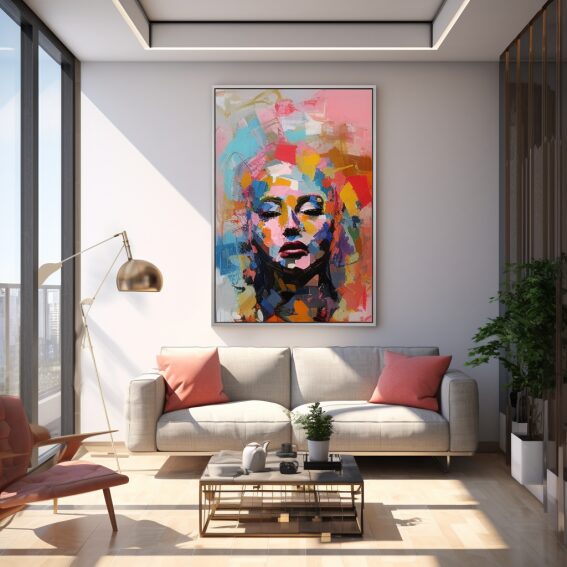
Art isn’t just a visual treat; it’s an expression of personality, a conversation starter, and a source of daily inspiration. Picking the right artwork for your home can be both exciting and a tad overwhelming. Here’s a guide to help you curate pieces that resonate with you and elevate your living space.
1. Reflect Your Personal Style
- Personal Connection: Choose pieces that evoke emotions, memories, or simply resonate with your personal aesthetic.
- Themes and Subjects: Whether you love landscapes, abstracts, or portraits, let your preferences guide you.
2. Consider the Room’s Purpose
- Bedroom: Opt for calming and serene pieces.
- Living Room: Bold and conversation-starting artworks can be ideal.
- Kitchen: Think fun, vibrant, or even food-themed pieces.
3. Size Matters
- Scale with Space: Large walls can accommodate bigger pieces or a gallery wall, while smaller spaces might benefit from petite artworks.
- Measure: Before purchasing, measure the space and consider the artwork’s size to ensure a good fit.
4. Play with Colors
- Complementary Colors: Artwork can either match the room’s color scheme or introduce contrasting shades for a pop of color.
- Monochrome Spaces: In a monochromatic room, black and white or sepia-toned art can add sophistication.
5. Mix and Match
- Variety: Combine different art forms – paintings, sculptures, prints, and textiles.
- Gallery Walls: A mix of photographs, prints, and small artworks can create a dynamic gallery wall.
6. Think Beyond Paintings
- 3D Art: Sculptures, ceramics, and wall hangings add depth and texture.
- Functional Art: Items like artistic clocks, mirrors, or even furniture can serve dual purposes.
7. Set a Budget
- Art Investments: While some pieces are investments, not every artwork needs to break the bank.
- Local Artists: Explore local art fairs or online platforms for affordable and unique pieces.
8. Framing Fundamentals
- Enhance the Art: A good frame can enhance the artwork and ensure longevity.
- Consistency: If you’re creating a gallery wall, maintaining consistent framing can unify diverse pieces.
9. Lighting is Key
- Spotlights: Highlight significant pieces with dedicated lighting.
- Natural Light: Ensure artworks aren’t exposed to direct sunlight to prevent fading.
10. Trust Your Instincts
While guidelines can assist, art is subjective. If a piece speaks to you, it has found its home.
Conclusion:
Art personalizes a space, making a house truly feel like a home. Whether you’re an art aficionado or a casual admirer, with a bit of thought and creativity, you can select pieces that reflect your style and elevate your space.

